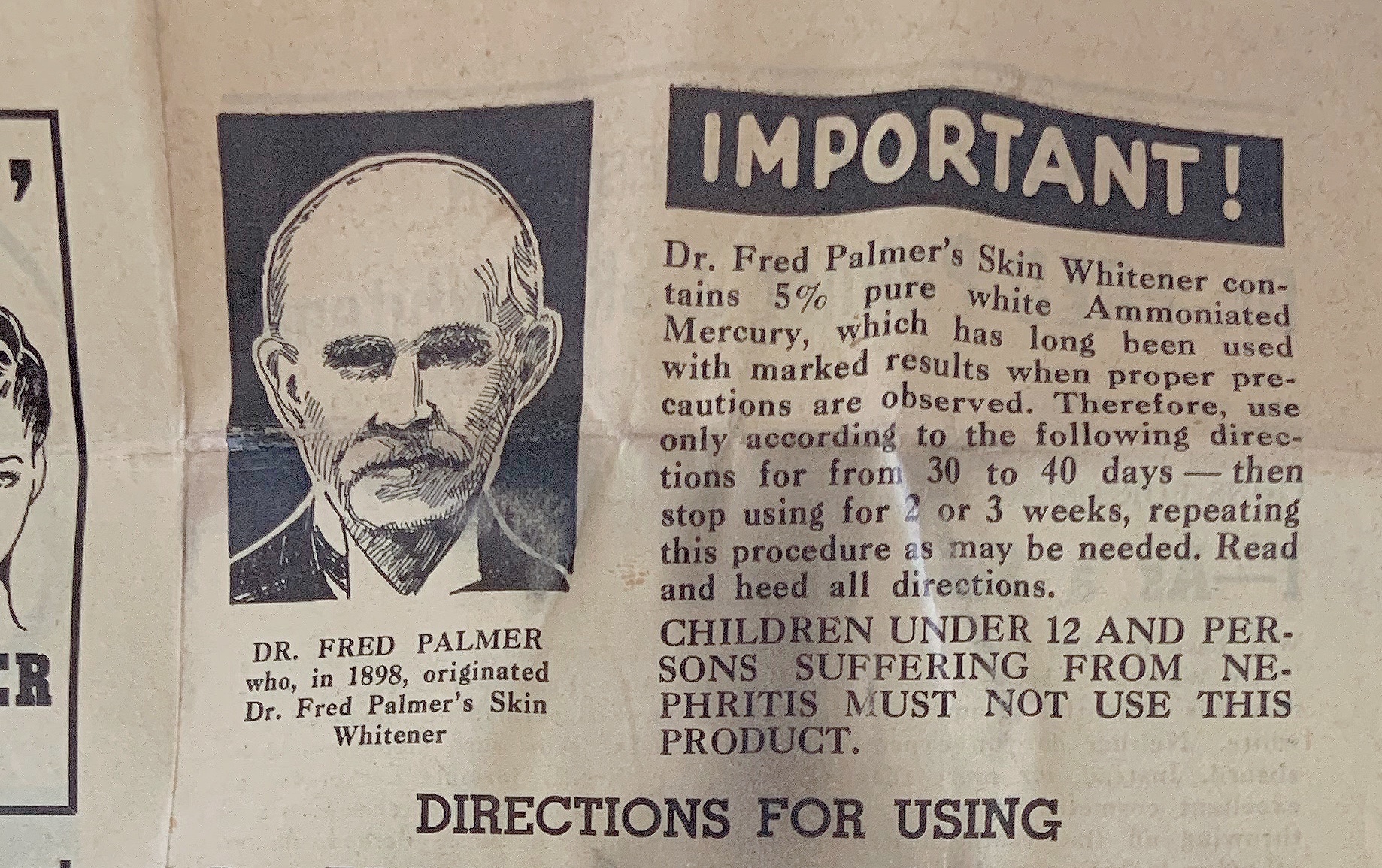Dr. Fred Palmer’s marriage to Julia Hayes had all the hallmarks of a star-crossed romance: Ex-slave in love with a white southerner, marriage dissuaded by the public, and intense racism that haunted them for decades.
Yet despite all of this, they openly lived as husband and wife, marrying in 1872. Though marriage laws refused to recognize the mixed race marriage – the US wouldn’t legalize it for another 100 years – they persevered anyways.
It’s a remarkable story of overcoming racism, as profiled by the Historic Oakland Society. They even briefly mention his job inventing beauty creams at Jacobs’ Pharmacy, an Atlanta pharmacy better known for being the birthplace of Coca Cola.
But what they don’t mention is that some of these creams were skin whiteners, aimed solely at Black Americans deemed too dark.
Profiting Off Racism
Although part of a mixed race marriage, Dr. Fred Palmer had no qualms about exploiting the problems facing the Black population. That included selling whitening creams laced with mercury, such as Dr. Fred Palmer’s Skin Whitener, first sold in 1898.


This product is a recent addition to my growing beauty collection – and an expensive one too. I purchased mine off Ebay, which still contained the illicit cream inside.
But the most important part of it is a pamphlet tucked inside the package, detailing its uses and other products created by Dr. Palmer.



During its initial release in 1898, poor regulation characterized the beauty industry, leading many brands to claim their products could cure anything. Dr. Palmer’s Skin Whitener proved to be a top contender, claiming it was “guaranteed absolutely harmless.”
But the effects of mercury were well known. Why sell such a dangerous product?
Well Dr. Palmer is long gone – he died in 1919, 3 years after his wife, having provided no insight. But other sources hint at profiting from his patients, most of whom were Black¹.
As explained by the website Immigrant Entrepreneurship:
This purported skin bleach was produced in-house by Jacobs’ Galenol Company, and it was named after the physician whose offices were located on the premises of the Jacobs’ Pharmacy building. Dr. Palmer’s patients came primarily from Atlanta’s black community, and the skin whitener was popular among those subject to Jim Crow legislated southern racial segregation.
Ah, old fashioned capitalism. Joseph Jacobs, who already gained notoriety for engaging in cut-rate pricing, surely enjoyed the Black clientele these whitening products would attract.
But to increase these profits even more, Jacobs began placing ads for Dr. Palmer’s products in Black newspapers, alongside editorials and reports highlighting anti-Black racism.
Here are just a few snippets:



These ads, which grew in size and frequency in the 1920s, were especially insidious, as it specifically targeted Black Americans who dealt with racism from multiple angles. That included attaining better education – a challenge in the Jim Crow South – in addition to Eurocentric beauty standards.
Though Dr. Palmer had been deceased for a decade by this point, he was responsible for creating this product, which Jacobs’ Pharmacy continued to profit from. In fact, I found ads even in 1966 still advertising it:

So what finally put an end to it? Being bought out, apparently. In the 1970s, E.T. Browne Drug Co bought the Dr. Palmer namesake, slapping it on a new product – Palmer’s Cocoa Butter.
They opted not to continue producing his skin whitening cream, however. That’s a product best left in history.
As for the love story of Dr. Fred Palmer and Julia Hayes, clearly not even companionship is enough to deter white people from profiting off racism and colorism.
¹ The sources I’ve found refer to Dr. Fred Palmer as a physician and pharmacist interchangeably.


I LOVES DR. PALMER SKIN WHITEN CREAM, BEEN USEING SINCE I WAS 12 I AM HAVING A HARD TIME FINDING IT PN SHELVES IN STORES.DR.PALMER DID A GREAT THING.PEOPLES SHOULD DECIDE TO BY HIS PRODUCT OR NOT. I LOVES SKIN WHITEN AND I NEED IT NOW. GOD IS MY ROCK GOD LOVES YOU DR. PALMER AND WIFE. SORRY I COULDN’T MEET YOU AND YOUR WIFE!! GRANDMA OF TIKTOK
I love it years ago I used it and it. Working really good I would like to order it where do I order it at
I would like to order this product where can I get it at